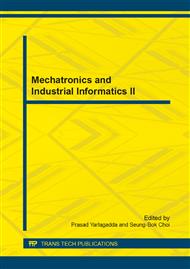p.927
p.931
p.936
p.944
p.951
p.960
p.966
p.971
p.976
Applying Improved Clustering Algorithm into EC Environment Data Mining
Abstract:
With the rising growth of electronic commerce (EC) customers, EC service providers are keen to analyze the on-line browsing behavior of the customers in their web site and learn their specific features. Clustering is a popular non-directed learning data mining technique for partitioning a dataset into a set of clusters. Although there are many clustering algorithms, none is superior for the task of customer segmentation. This suggests that a proper clustering algorithm should be generated for EC environment. In this paper we are concerned with the situation and proposed an improved k-means algorithm, which is effective to exclude the noisy data and improve the clustering accuracy. The experimental results performed on real EC environment are provided to demonstrate the effectiveness and feasibility of the proposed approach.
Info:
Periodical:
Pages:
951-959
Citation:
Online since:
July 2014
Authors:
Keywords:
Price:
Сopyright:
© 2014 Trans Tech Publications Ltd. All Rights Reserved
Share:
Citation:


